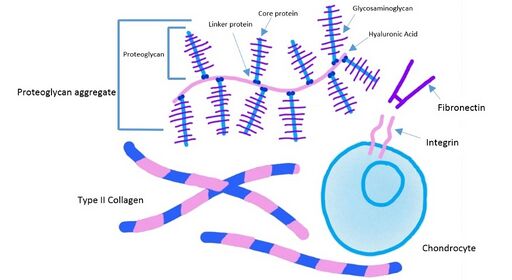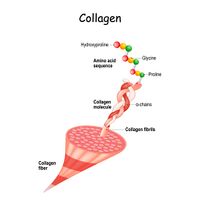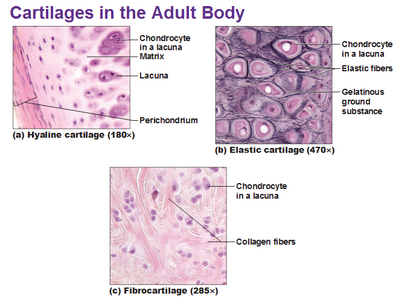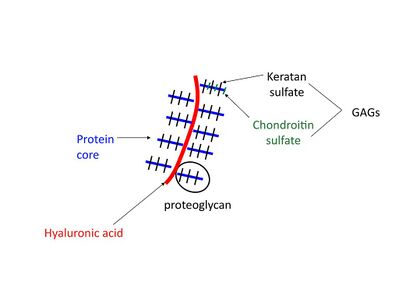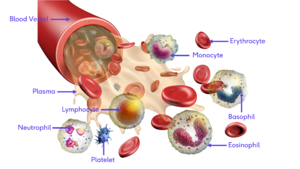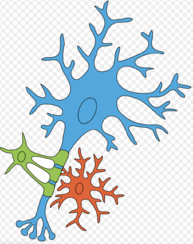Extracellular Matrix
Original Editor - Lucinda hampton
Top Contributors - Lucinda hampton and Tolulope Adeniji
Introduction[edit | edit source]
The extracellular matrix (ECM) is the non-cellular component present within all tissues and organs, providing the essential physical scaffolding for the cellular constituents. The ECM holds water, ensures suitable hydration of the tissue, participates in a selective barrier to the external environment and also eg gives tensile strength, limits overstretch of the organs. The ECM also initiates crucial biochemical and biomechanical cues for tissue morphogenesis, differentiation and homeostasis[1][2].
In human, the main components of the extracellular matrix are:
- Fibrous elements (e.g. collagen, elastin, reticulin),
- Link proteins (e.g. fibronectin, laminin), and
- Space filling molecules (e.g. proteoglycans, glycosaminoglycans)[3]
Varies Roles of ECM[edit | edit source]
The role of the ECM depends on its nature and composition. eg, the matrix may be mineralised in bone to resist compression or dominated by tension resisting collagen fibres in tendons. Below various examples are given.
Tendon[edit | edit source]
The ECM of tendon is composed predominantly of collagen, which accounts for ~ 60–85% of the dry weight of the tissue. Approximately 95% of the collagen is type I. The collagen provides excellent mechanical strength to the tendon along one axis! allowing them to be able to withstand tension.[4]
Cartilage[edit | edit source]
Chondrocytes synthesise the cartilage ECM and makes it both stiff and elastic.
- Mainly composed of type II collagen, up to 25 % of dry weight, with types IX and XI collagens present in lower proportions.
- The second most abundant molecules are glycosaminoglycans, such as hyaluronan and aggrecan, which join together to form macromolecular complexes.
Collagen counteracts tensile loads and glycosaminoglycans decrease the mechanical pressures.
Bone[edit | edit source]
Osteoblasts synthesise bone ECM. Consists of:
- Type I collagen mixed with a matrix of calcium phosphate crystal (which is up to 70 % of the dry weight). Collagen allows bone to be elastic enough to avoid bone fragility and not to be easily broken whilst calcium phosphate crystal provides stiffness and hardness.
- Proteoglcans and glycoproteins, which are less abundant, but vital for the organization of collagen fibers, mineralization and resorption of bone. Chondroitin sulfate accounts for 67-97 % of the bone glycosaminoglycans.[5]
Blood[edit | edit source]
The extracellular matrix of blood is called plasma, making blood unique among connective tissues because it is fluid. This fluid, which is mostly water, suspends the formed elements and enables them to circulate throughout the body within the cardiovascular system.
Nervous Tissue[edit | edit source]
Macroglia provide most of the the ECM in the nervous system, with the ECM playing an important role in supporting and signaling. ECM components are key mediators of glial activation and have the capacity to evoke both regenerative and degenerative effects on glia and neurons. The production of ECM components changes drastically during reactive gliosis, a reaction that happens in response to nervous tissue damage. There is only a small amount of extracellular matrix in the nervous tissue.[6]
Clinical Implication of ECM and Physiotherapy Practice[edit | edit source]
While Knowledge of ECM is important to physiotherapy its clinical application in manual therapy and wound healing cannot be overemphasized. To reiterate the above draft, the ECM components of clinical significance to physiotherapists include 1. glycosaminoglycans, GAGs, (named proteoglycans when attached to a protein core), 2. Glycoprotein 3. Fibrous proteins
It is important to note that ECM is motion-dependent (ECM requires a motion for its production). and half-life of GAGs and Proteoglycans is between 1,7 to 7 days.
Isometric contraction at an early stage of rehabilitation of patients with pain-induced splinting is essential to keep dense connective tissue lubricated. in a period not less than a month, loss of weight-bearing and movement on joint may reduce proteoglycans by 40%
Hyaluronan or hyaluronic acid is a form of GAGs that is responsible for resisting mechanical stress within cartilage and a good presence of it also aids in wound healing.
Fibrous protein is made up of collagen and elastin. The collagen microfibril structural dimension makes it strong that it cannot shrink and cannot be stretched with permanent elongation, without denaturing or damaging the integrity of the soft tissue structure. Thus, "manual therapist must become comfortable working within the physiologic range of DCT if the treatment goal is not to tear or permanently damage a particular collagenous structure. One indication that the therapist is working outside the physiologic range, or “safe zone,” is when the client complains of prolonged stiffness, pain, or both lasting longer than 1 hour after treatment."
Conclusion[edit | edit source]
As shown above, the ECM is also a reservoir of bioactive molecules, being a highly dynamic entity that is of great importance, determining and controlling the most fundamental behaviours and characteristics of cells such as proliferation, adhesion, migration, polarity, differentiation, and apoptosis.[3]
References[edit | edit source]
- ↑ Simona Pompili, Giovanni Latella, Eugenio Gaudio, Roberta Sferraand Antonella Vetuschi The Charming World of the Extracellular Matrix: A Dynamic and Protective Network of the Intestinal Wall Available: https://www.frontiersin.org/articles/10.3389/fmed.2021.610189/full (accessed 28.6.2022)
- ↑ Christian Frantz,Kathleen M. Stewart,Valerie M. Weaver The extracellular matrix at a glance Available: https://journals.biologists.com/jcs/article/123/24/4195/31378/The-extracellular-matrix-at-a-glance (accessed 28.7.2022)
- ↑ 3.0 3.1 Biology on line Extracellular matrix Available: https://www.biologyonline.com/dictionary/extracellular-matrix (accessed 28.6.22)
- ↑ H.R.C. Screen, D.E. Birk, [...], and M.F. Young Tendon Functional Extracellular Matrix Available: https://www.ncbi.nlm.nih.gov/pmc/articles/PMC4507431/ (accessed 28.6.2022)
- ↑ Mmegias ECM Available: https://mmegias.webs.uvigo.es/02-english/5-celulas/2-tipos_mat_met.php (accessed 28.6.2022)
- ↑ Elena Vecino and Jessica C. F. Kwok The Extracellular Matrix in the Nervous System: The Good and the Bad Aspects Available:https://www.intechopen.com/chapters/50300 (accessed 28.6.2022)
